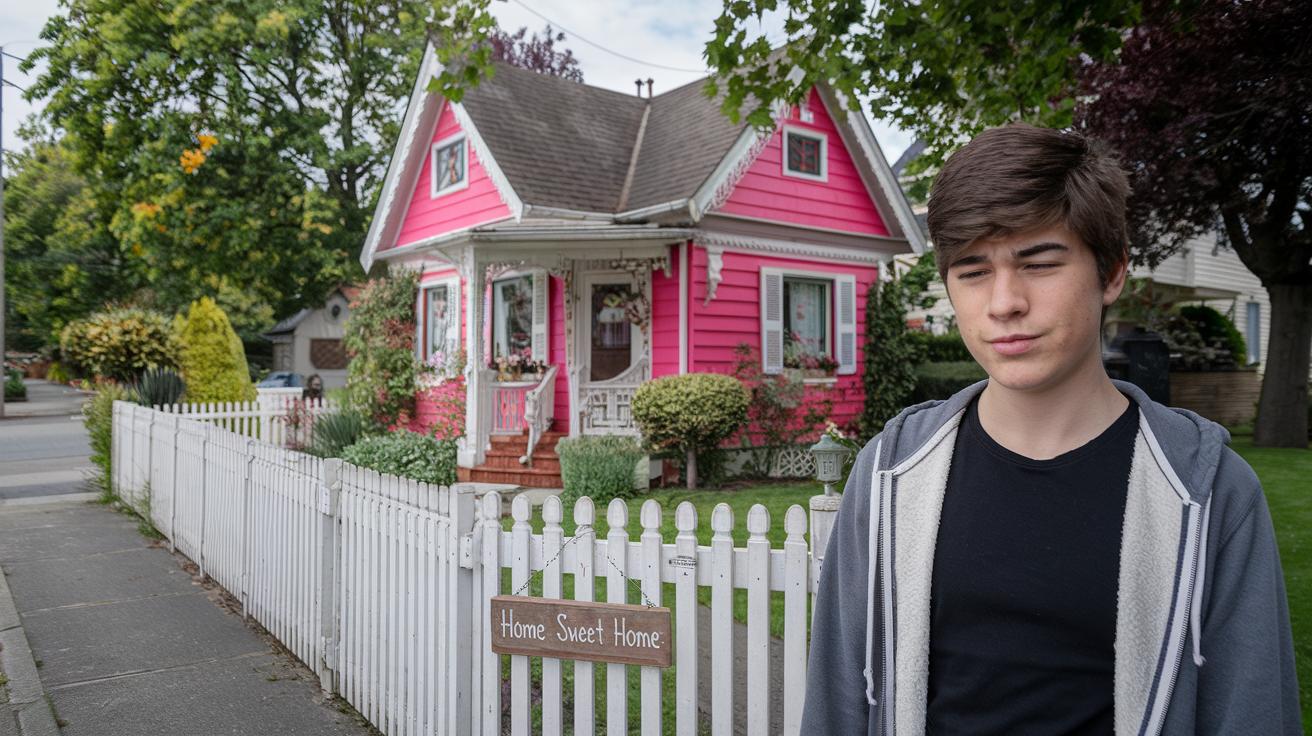AITA for not picking a new color for my house even though my son finds the one we have embarrassing?
Imagine living in a house with a color so bold it becomes a conversation starter wherever you go. Fifteen years ago, the OP bought a fixer-upper that came with one very unusual feature—a bright pink exterior. The previous owner claimed the color was chosen to irk the neighbors, but for the OP, it became a charming quirk. When renovations came around, the son, now 13, complained that the pink hue was “embarrassing” and suggested a more traditional color.
Despite his protests, the family decided to stick with the unique shade that had grown into a part of their identity. While the daughters embraced the cheerful vibe, the son felt out of place. With family opinions clashing, especially with MIL weighing in, the burning question remains: is it wrong to prioritize personal taste over his teenage embarrassment?
The conflict reveals a classic generational and aesthetic clash—one that pits family tradition against the evolving tastes of youth. The OP defends the decision by asserting that the house, with its storied past and vibrant character, is theirs to enjoy for years to come. When asked to choose a new color, the family simply replied: this is our house, and we love it just the way it is.
‘AITA for not picking a new color for my house even though my son finds the one we have embarrassing?’

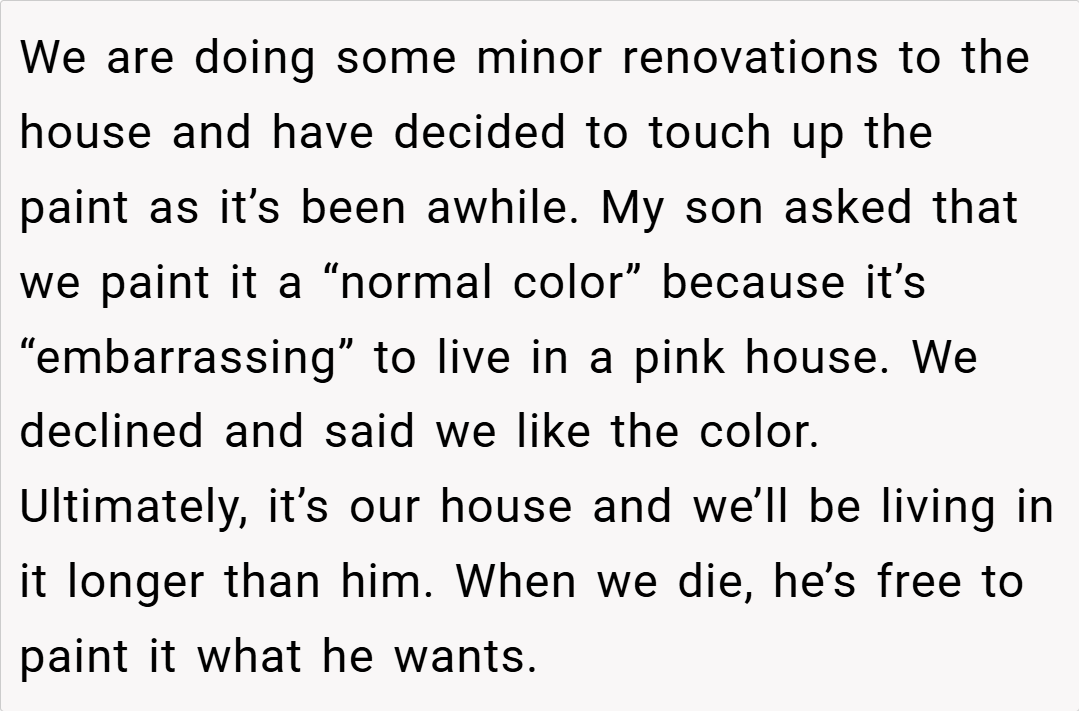
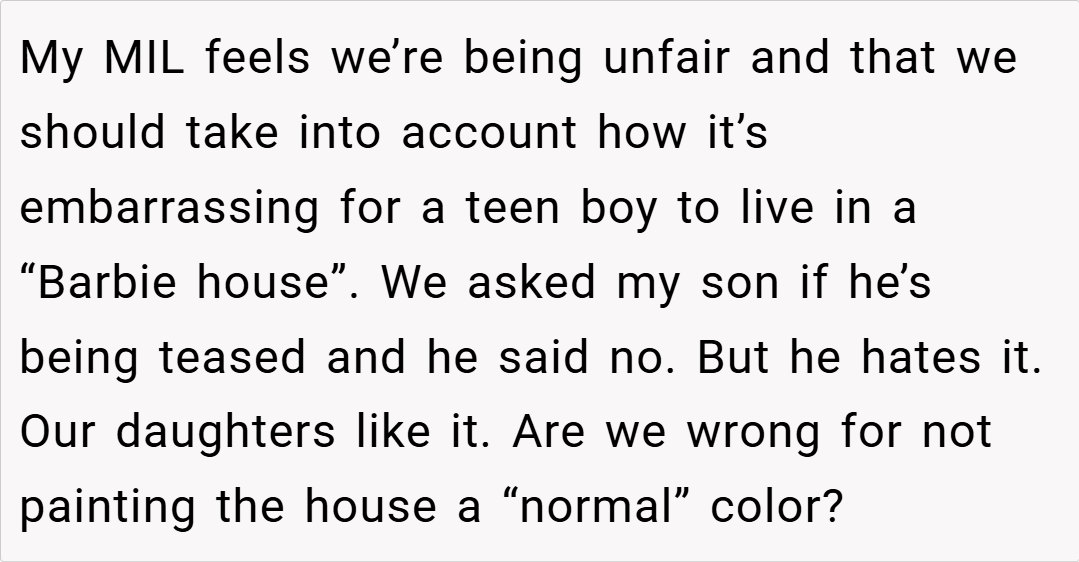
Design expert and cultural commentator, Dr. Helen Brooks, emphasizes that color is a powerful symbol of identity and personal expression. “A house’s color can become a part of its narrative,” she explains, adding that unique hues can foster a strong sense of place and history.
In this instance, the bright pink exterior isn’t just paint—it’s a legacy, a conversation piece, and a statement of individuality. Dr. Brooks notes that while some may view unconventional colors as embarrassing, they often contribute to a home’s character and charm. (Architectural Digest)
Furthermore, research in environmental psychology indicates that color choices can have a significant impact on mood and identity. Dr. Brooks points out that while more traditional colors might appeal to a broader audience, the use of pink can evoke warmth, playfulness, and creativity. For families that have grown up with a certain aesthetic, the familiarity and history attached to that color can be deeply meaningful.
Changing it might feel like erasing part of their story. In essence, the decision to maintain the original color is as much about preserving memories as it is about personal taste. Additionally, experts argue that adolescence is a time of evolving self-image, and while teenagers might sometimes crave conformity, the challenge lies in balancing personal expression with societal norms.
The OP’s son may feel embarrassed now, but over time, the uniqueness of the home could come to be seen as a badge of honor rather than a source of shame. Effective communication about the value of individuality and family heritage might help him appreciate the house’s distinctive charm. Ultimately, experts agree that when a decision is rooted in history, shared memories, and personal preference, it holds significant weight, even if it doesn’t align with everyone’s expectations.
Here’s how people reacted to the post:
One Redditor argued that the house’s pink color is a unique part of its story and legacy. They highlighted that living in a pink house isn’t “embarrassing” but rather a conversation starter that makes the home memorable. They emphasized that since the color was chosen long ago and carries sentimental value, the son’s complaints, while understandable for a teenager, are outweighed by the home’s cherished history and character.
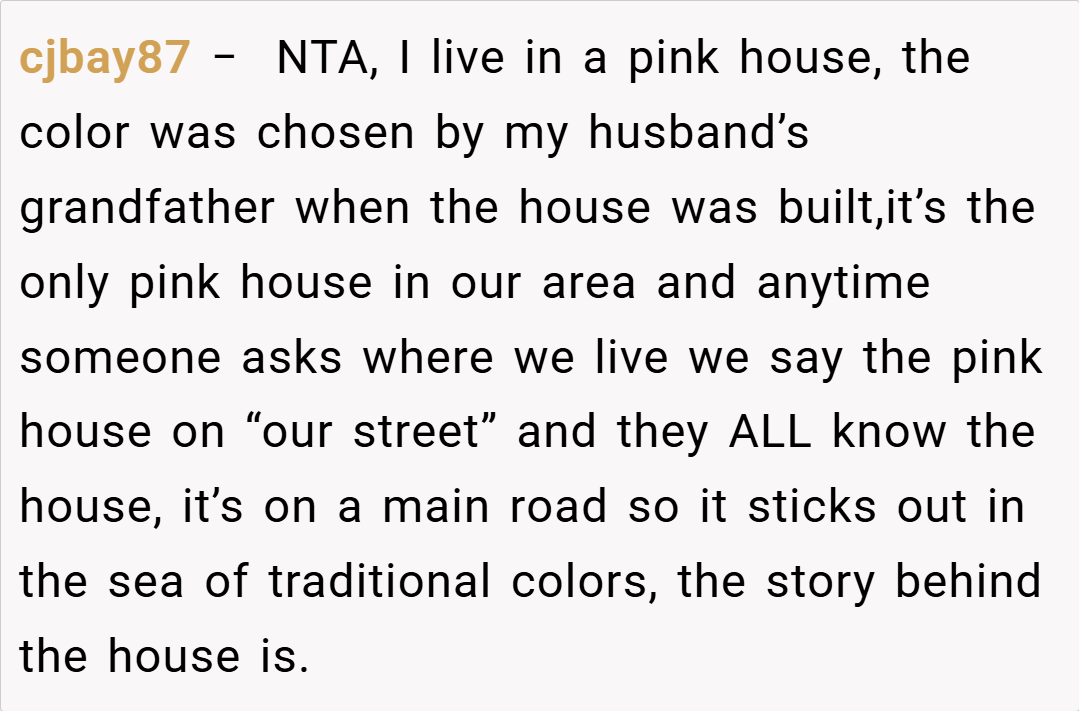
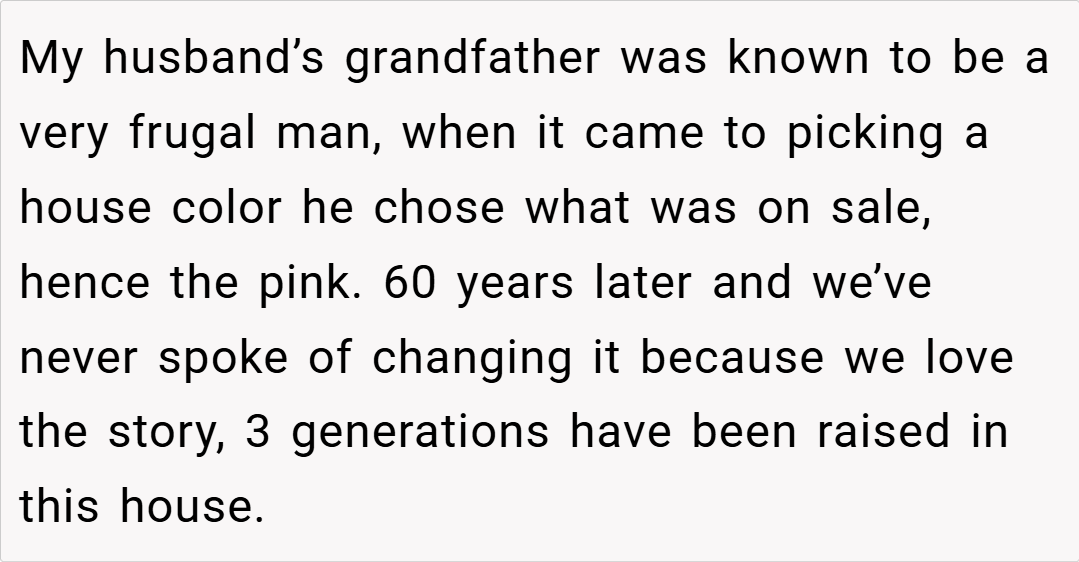
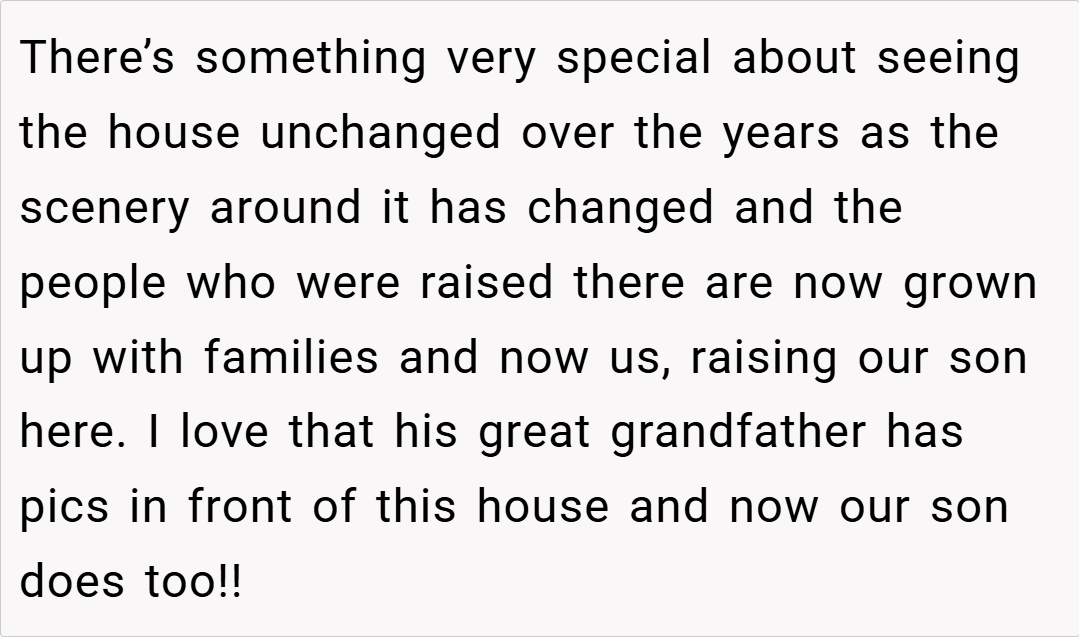
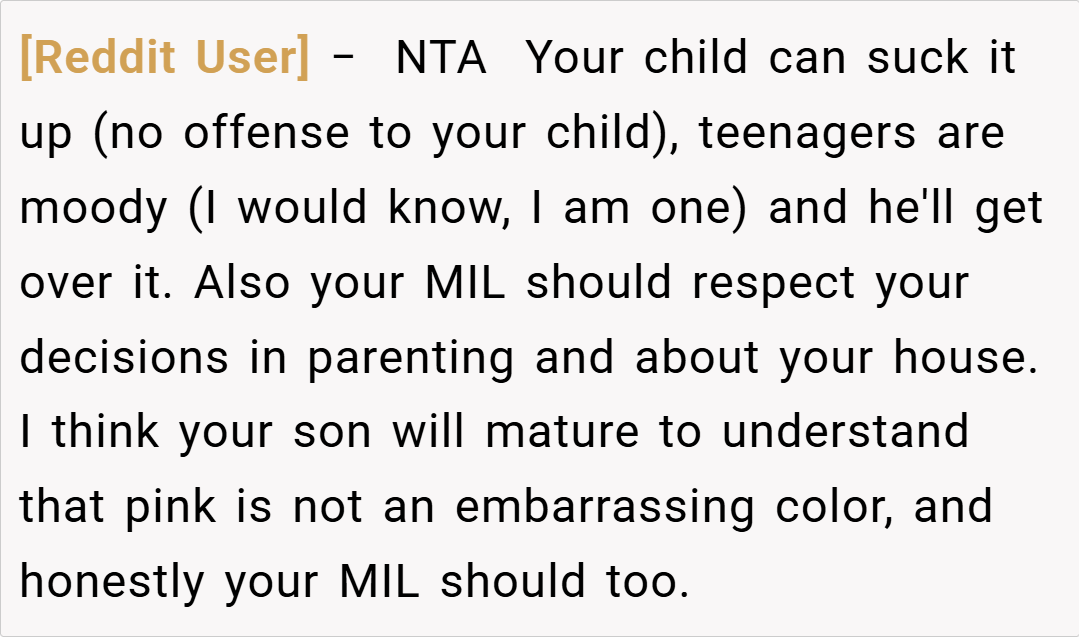










Ultimately, the decision to keep the pink paint on the house comes down to personal taste, family legacy, and the value of individuality. While the son’s feelings are valid, especially during the sensitive teenage years, the home remains a cherished symbol of the family’s history.
Do you believe that personal expression should outweigh temporary social pressures? How would you balance family tradition with a teenager’s evolving sense of identity? Share your thoughts and experiences in the comments below—let’s explore the intersection of design, heritage, and self-acceptance together.


